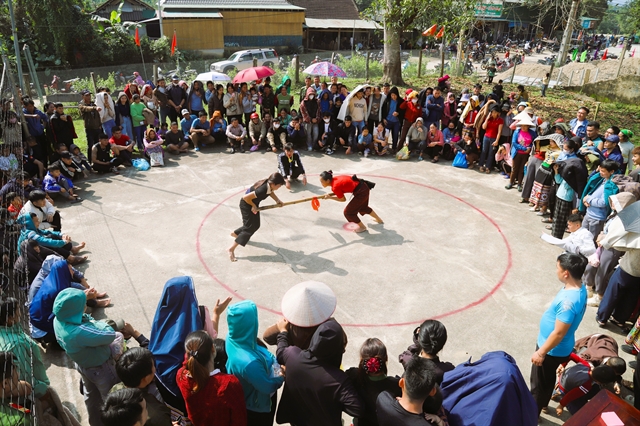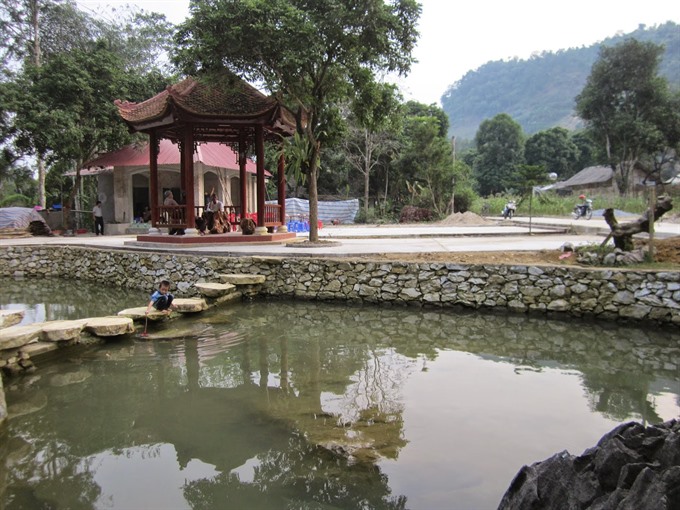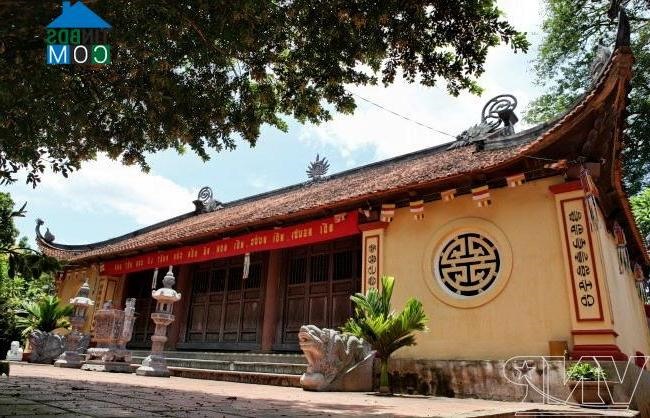 Life & Style
Life & Style

The site is about 90km from Yên Bái City and more than 150km from Hà Nội, but temples are peaceful places, so they could end up soothing frayed nerves and rejuvenating my tired cells, I thought.
 |
| Good luck charm: The Suối Tiên Temple is said to have stopped a long run of bad luck after it was upgraded many years ago. |
By Duy An
I do not need a second invitation when relatives call me to visit their hometown, either to chill out or check out some local attraction.
For one thing, I love to travel, and for another, if it is a place, site or monument that I have not seen, my enthusiasm to visit just bubbles over.
So, when my aunt, La Thị Hiền, whose native village is in the northwestern province of Yên Bái, suggested that I visit the Đại Cại and Suối Tiên temples in Lục Yên District, I got my family began packing immediately, although I was really tired from a long work-related trip to the UK.
The site is about 90km from Yên Bái City and more than 150km from Hà Nội, but temples are peaceful places, so they could end up soothing frayed nerves and rejuvenating my tired cells, I thought.
Thankfully, my guess was spot on, this time.
As we passed the Tô Mậu Bridge spanning the Chảy River
in Yên Bái, the beauty of the natural landscape that greeted us was uplifting. We had reached the Đại Cại Temple in Tân Lĩnh Village, with its unique terracotta Hắc Y Tower.
The site is recognized as a national relic, and a local tour guide, Vi Hồng Nhân, explained why.
He said archaeologists found that the terracotta bricks used to build the Hắc Y Tower carried intricate patterns of the peepal (sacred fig, ficus religiosa ) leaves, chrysanthemums and lotuses.
“This is a very important discovery because it proves that the technique of making such bricks also existed in the highlands of Yên Bái, as it had in the lowlands thousands of years ago,” Nhân said.
He said the temple was built during the Lê Dynasty ((1427-1489) to honour and worship Vũ Ngọc Anh, a daughter of court official, who was tasked with managing locals and troops to entrench and build the Bầu Citadel, and to establish a market system in the region.
She was also asked by the king to take charge of supplying food for the troops for years, a task full of obstacles, including thick forests difficult to access. For her outstanding work, the king conferred on her a noble title: the Lord of Military Provisions.
In addition, she also learned cultivation methods from the lowlands and propagated them from the highlands, showing locals how to grow wet rice, cotton, and even weaving fabric, Nhân said.
The temple is also dedicated to two brothers, Vũ Văn Mật and Vũ Văn Uyển, who bravely fought foreign aggressors.
The temple’s architectural features and artefacts, including its pillars and carvings, the bronze incense burner, red lacquer works trimmed with gold-coloured four season carvings, made with precious wood like Parashorea chinensis, Gmelina arborea Roxb (also known as Gamhar) and canary wood, stand testament to the artistry and creativity of our ancestors.
A terracotta Buddha statue placed on a large carved lotus flower pedestal captured our interest. “They are characteristics of the Trần Dynasty (1226-1400),” a monk told us.
He also informed us that King Tự Đức (1847-1883) had conferred a sacred title on the temple.
On the fifteenth of the first lunar month, thousands of pilgrims and foreign visitors come to pray and enjoy the Đại Cại Temple Festival.
“During this festival, our family offers incense to the deities and pray for a bumper crop, and for our country to be prosperous and strong,” aunt Hiền said, adding that she and her brothers enjoyed the traditional games featured in the festival, including shooting with a crossbow, cock-fighting and tug of war.
Aunt Hiền then took us to another nearby tourist attraction, the Suối Tiên Temple in Tô Mậu Village.
A tour guide at the temple, Nông Thị Liên, told us that the pagoda was built in 1928-1929. It is surrounded by the Thắm, and Bạch Mã mountains which have many beautiful caves and abundant fauna and flora.
“The caves were very good places for our people to hide weapons and food to supply our army during the wars against the French and Americans,” Liên said.
Before entering the temple, we went past a very big well. The water was so clear that we could see a school of goby fish (locally known as deity fish). My sons had a good time running around the well chasing them.
Legend has it that on upon a time, the land here was covered with green, flowering trees that blossomed all year around, and a pure and fresh stream running from the base of the Thắm Mountain. Seven fairies took a bath every afternoon in the stream. At that time, in Tô Mậu Village, there was young man, Chạ whose parents died when he was a little boy. Chạ was a woodcutter. One day, he hid the wings of the seventh fairy, so she could not fly back to heaven.
Chạ asked the fairy to come to his home. They later became husband and wife and the fairy taught villagers how to reclaim land for farming, grow other crops and make nets to catch fish in the Chảy River.
Thanks to her, villagers led much better lives than before. But years later, the fairy was asked by her father (the Jade Emperor) to return to heaven. She took her two children along.
The villagers then built a temple called Pó Tiên (Tiên Stream) to worship the fairy for her contribution to the village, Liên said.
Nguyễn Quang Long, deputy head of the Lục Yên’s Culture Office, said that locals believe that before the temple was built, many unlucky things happened to them.
“ I don’t know its true or not but villagers still say that since the temple was built, every thing in the village became stable and very few people met with accidents and sudden deaths.”
The sacred, serene ambience of the temple and its surrounding natural beauty had a calming effect on us. It made the trip from a noisy, polluted city well worth it.
Aunt Hiền then asked us to visit the Khai Trung eco village. We thoroughly enjoyed the thick, unspoilt forest and traditional food of the Tày and Nùng ethnic groups, including crispy eggplants, castrated roosters and banana cakes.
As we prepared to leave (I had work, my sons had school), I thanked aunt Hiền, and said very firmly: “We’ll be back next month.” — VNS
 |
| Haven of peace: The Đại Cại Temple, a national culture and historical site in Yên Bái, welcomes thousand of pilgrims and travelers every year. Photos dulichyenbai.com |




